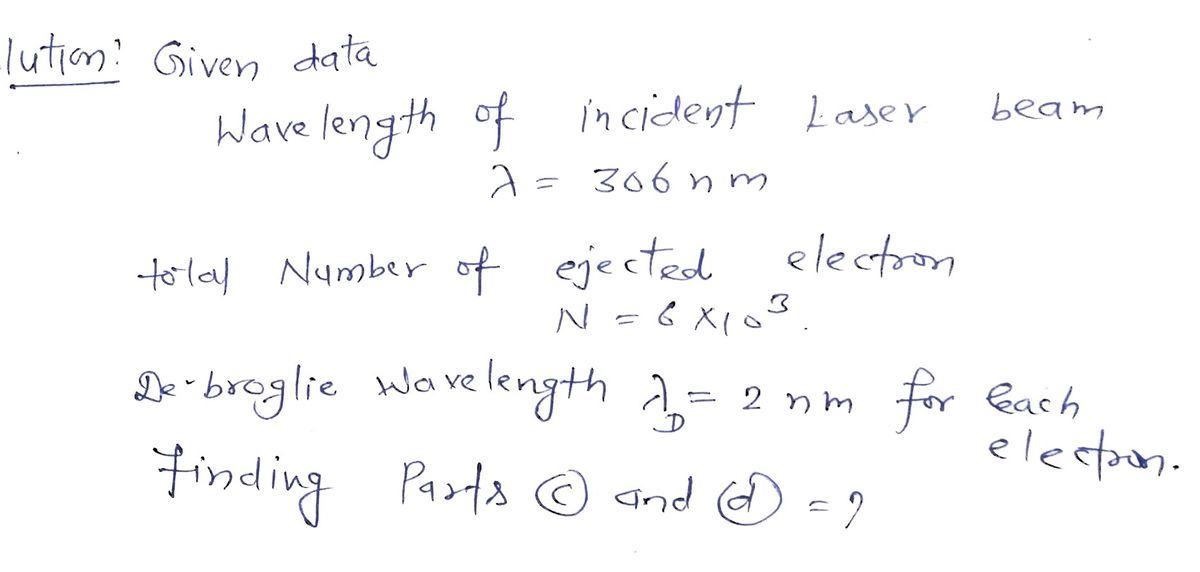magnesium metal foil was illuminated by a pulse of laser beam with a wavelength of 306 nm. A total number of 6 × 10³ ejected electrons were generated. Each electron has an de Broglie wavelength of 2 nm. (c) What's the energy of the laser beam? (d) If we increase the laser intensity by two times, how will it affect the kinetic energy of ejected electrons (decrease, increase or no change)? Why?
magnesium metal foil was illuminated by a pulse of laser beam with a wavelength of 306 nm. A total number of 6 × 10³ ejected electrons were generated. Each electron has an de Broglie wavelength of 2 nm. (c) What's the energy of the laser beam? (d) If we increase the laser intensity by two times, how will it affect the kinetic energy of ejected electrons (decrease, increase or no change)? Why?
Related questions
Question
answer part c and d

Transcribed Image Text:The text is from an educational context focusing on the photoelectric effect:
A magnesium metal foil was illuminated by a pulse of a laser beam with a wavelength of 306 nm. A total number of \(6 \times 10^3\) ejected electrons were generated. Each electron has a de Broglie wavelength of 2 nm.
Questions:
(c) What's the energy of the laser beam?
(d) If we increase the laser intensity by two times, how will it affect the kinetic energy of ejected electrons (decrease, increase or no change)? Why?
Expert Solution
Step 1: Determining the given data

Step by step
Solved in 4 steps with 4 images
